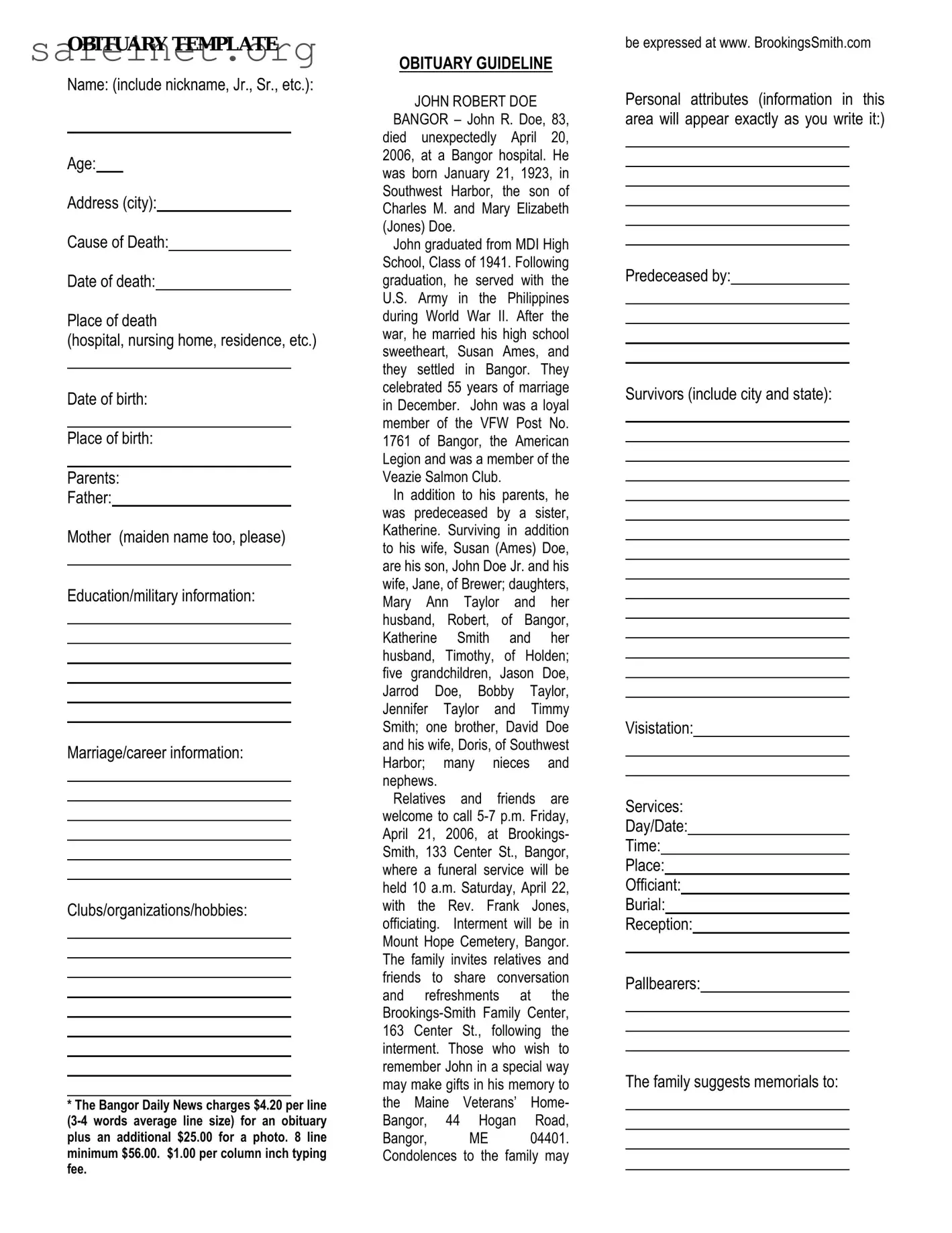An obituary form is similar to a death certificate, which is an official document issued by the state. A death certificate provides essential information about a deceased individual, such as their name, date of birth, date of death, and cause of death. This document is often required for legal purposes, including settling estates and handling insurance claims. While an obituary aims to commemorate the deceased and inform the community, a death certificate serves a more administrative function.
An estate planning document, like a will, is also comparable to an obituary form in that both documents convey information about an individual's life. While an obituary highlights personal achievements and contributions, a will outlines how a person's assets should be distributed after their death. Both documents play critical roles in managing affairs after a person's passing, communicating important wishes, and providing closure to loved ones.
A funeral service program bears similarities to an obituary form, as both serve to celebrate the life of the deceased. The funeral program often includes biographical information, a summary of the individual’s life, and details of the funeral service itself. Like an obituary, it can be shared with attendees during memorial services, helping to honor the individual's legacy and providing a sense of connection for mourners.
A memorial announcement is another document like the obituary form. It is generally brief and serves to inform friends and family about a person's passing. Unlike an obituary, which may be longer and more detailed, a memorial announcement often focuses on the time and place of the service. Both documents play a crucial role in communication and support for the bereaved.
A life celebration program is yet another document that resembles an obituary form. It is tailored for events that honor a person's life in a celebratory manner rather than a somber one. Like an obituary, a life celebration program shares personal narratives, achievements, and memories. It offers a space for reflection and remembrance, emphasizing positivity and shared experiences.
A tribute or eulogy is comparable to an obituary in its purpose to honor and commemorate a person's life. While a eulogy is delivered during a memorial service and speaks to the individual's character and impact, an obituary serves as a written testament of those same qualities. Both documents allow loved ones to exalt the life of the departed in different formats—one as a speech and the other as a published piece.
An identification card for the deceased, often used for burial purposes, serves a different kind of function but is similar in its necessity for acknowledging a life lost. This card contains vital data such as the individual's name, date of birth, and location of burial. While it is more administrative and less personal than an obituary, it solidifies the identity of the deceased and is important for final arrangements.
A headstone inscription is reflective of an obituary form in that it captures essential details about a person's life. Headstones typically include the deceased's name, dates of birth and death, and sometimes a brief epitaph or message. Both documents aim to preserve the memory of the individual, ensuring they are remembered by future generations.
Finally, a social media post announcing a death can also be considered similar to an obituary form. In today’s digital age, many people choose to share news of a loved one's passing through social media platforms. These posts often encapsulate the same information found in an obituary, celebrating the life of the deceased and connecting with the community, albeit in a more informal and immediate manner.

